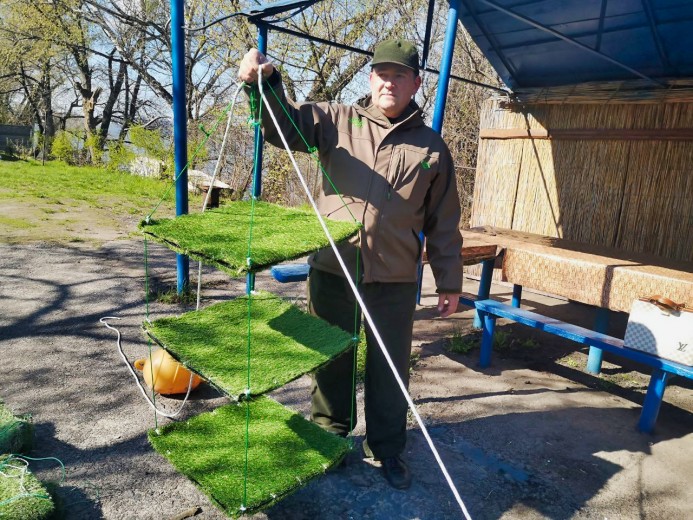DTEK Dnipro Grids helped to place artificial spawning grounds in the Dnieper

Mass fish spawning begins in the region in late April-early May. Artificial spawning sites for roach and bream were specially made for this time. They were placed near Alekseevsky Island by ichthyologists of the Dnieper State Agrarian and Economic University (DSAEU), scientists of the Scientific Research Center «Dnieper Natural Inspection» with the assistance of the State Fisheries Agency. Schools of fish gather in this water area, and then further go to spawn in Samara. Special designs will become a convenient place for them to throw eggs and breed new offspring.
«Biodiversity conservation is one of the areas of DTEK Dnipro Grids’ focus within the framework of the New DTEK 2030 Strategy, based on ESG principles and the sustainable development goals of the UN Global Compact. We are happy to support such environmental initiative. Our specialists joined the project and made 80 structures as per the drawings of ichthyologists. A total of 180 such artificial nests will be placed: 130 of them — around Alekseevsky Island near the city of Dnipro. Another 50 will be in the reclamation canal named Dnieper-Donbass. We hope that the fish will use them for spawning, and in a month the Dnieper River will be inhabited by thousands of fish larvae that will turn into fry,» says Andrii Tereshchuk, CEO of DTEK Dnipro Grids.
Artificial spawning sites are special multi-tiered structures. Each «tier» is covered with lawn grass, on the villi of which fish could lay eggs. Sticky eggs will be able to stay on such coating for a week or two, after which they turn into larvae and leave their first «home».
Ichthyologists have been practicing the installation of such spawning grounds on the Dnieper River for the second year in a row. The placement of artificial structures last year has fully proved its effectiveness, — says Professor Roman Novitsky, the initiator of the project and the Head of the DSAEU Aquatic Bioresources and Aquaculture Department.
«Artificial nests are not new. Even 30 years ago, thousands of artificial spawning grounds were placed into our reservoirs. Now we are reviving this simple but very effective aid to the fish of the Dnieper region. Last year, we placed a hundred artificial spawning nests of the original design. An average of 5,200 eggs were spawned by roaches on each site, which successfully were through the stage of incubation and produced thousands of larvae of future roach and silver bream. This year, with the support of DTEK Dnipro Grids, we plan to place one and a half times more nests and ensure a qualitative increase in the population of roach and, possibly, bream,» says Roman Novitsky.
According to the specialist, ichthyologists will be taking care of the placed grounds over the next few weeks: check their safekeeping, periodically wash them out of suspension and silt, monitor the «seeding» of eggs and the development of eggs. At the end of spawning in 2021, the nests will be collected, dried, and stored until the next season.
For reference
Commitment to responsible attitude to resources and the environment, protection of biodiversity are the DTEK Dnipro Grids’ priorities. As previously reported, to preserve rare and endangered birds, the company installed more than 160 safe nesting structures for white storks in the region, as well as over 1,500 bird diverters on high-voltage lines. These initiatives of the company are in line with DTEK’s 2030 strategy based on ESG principles, values, and business responsibility for progress in achieving the Sustainable Development Goals of the UN Global Compact for the Conservation of Terrestrial Ecosystems.

